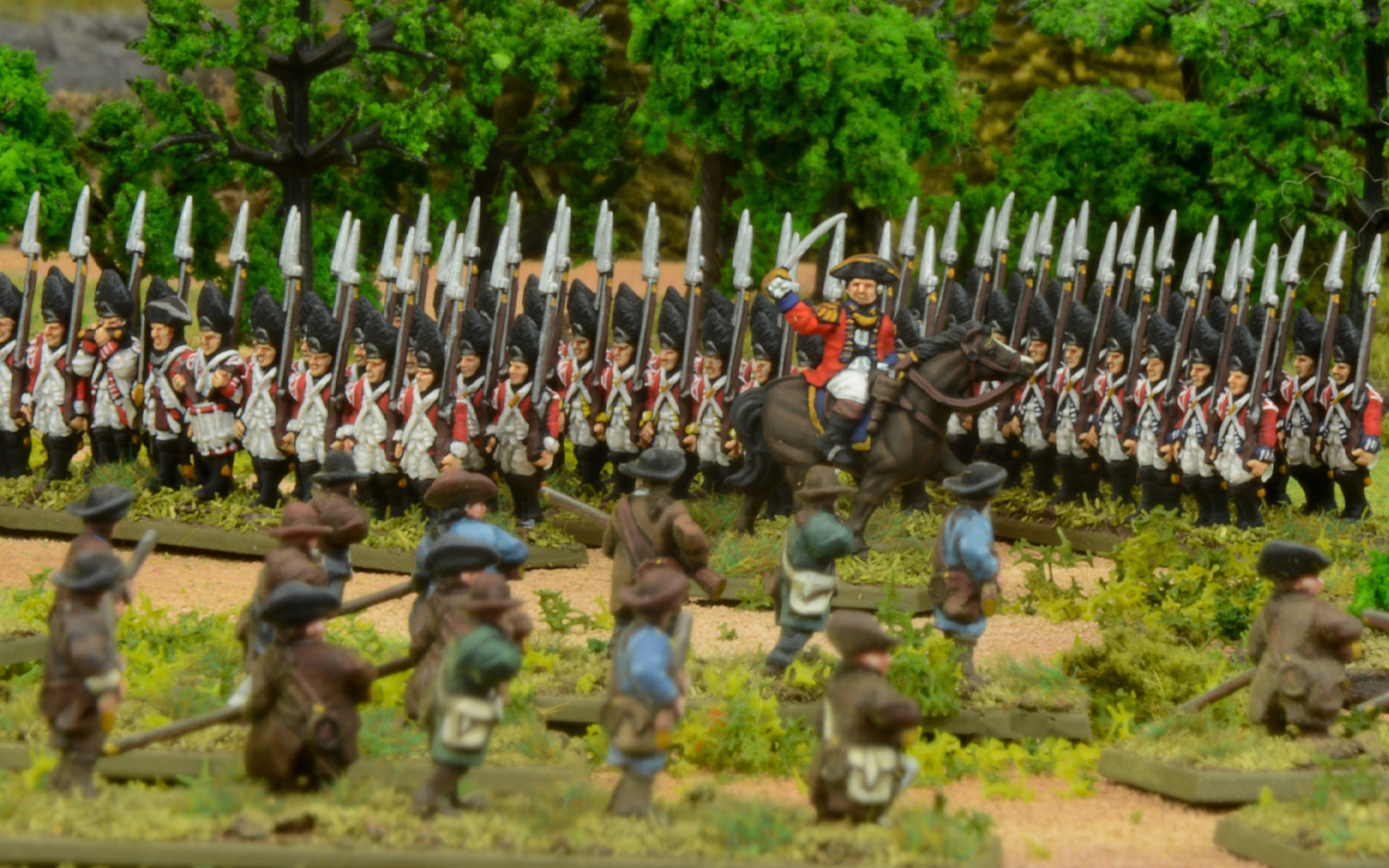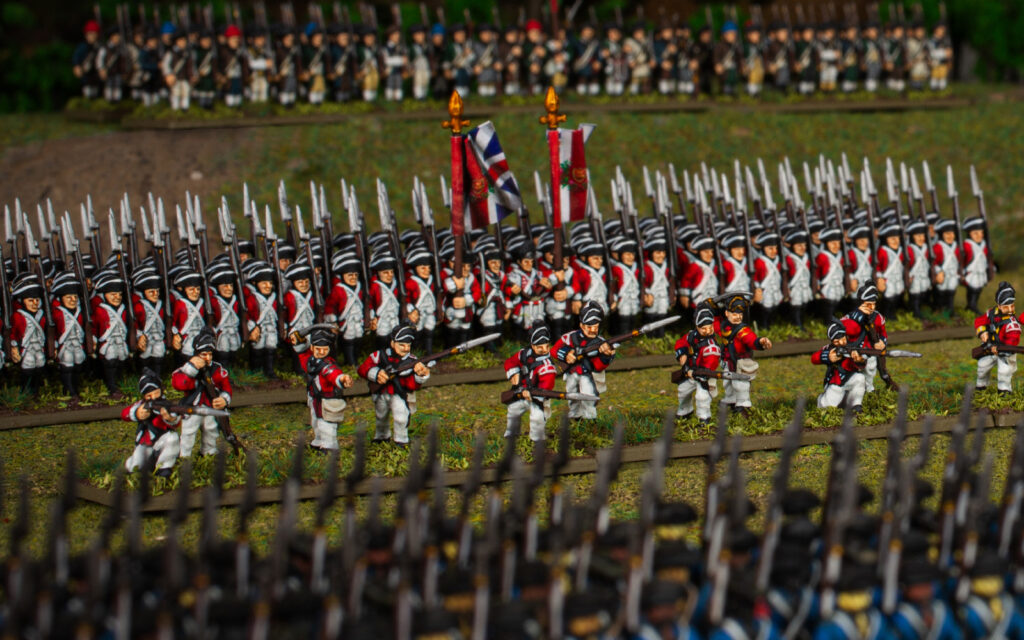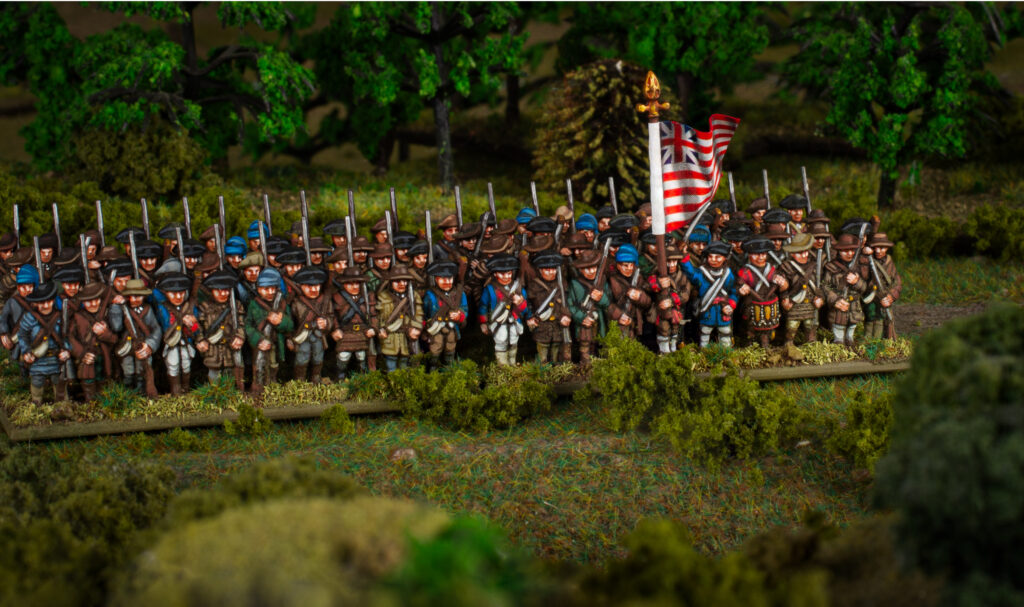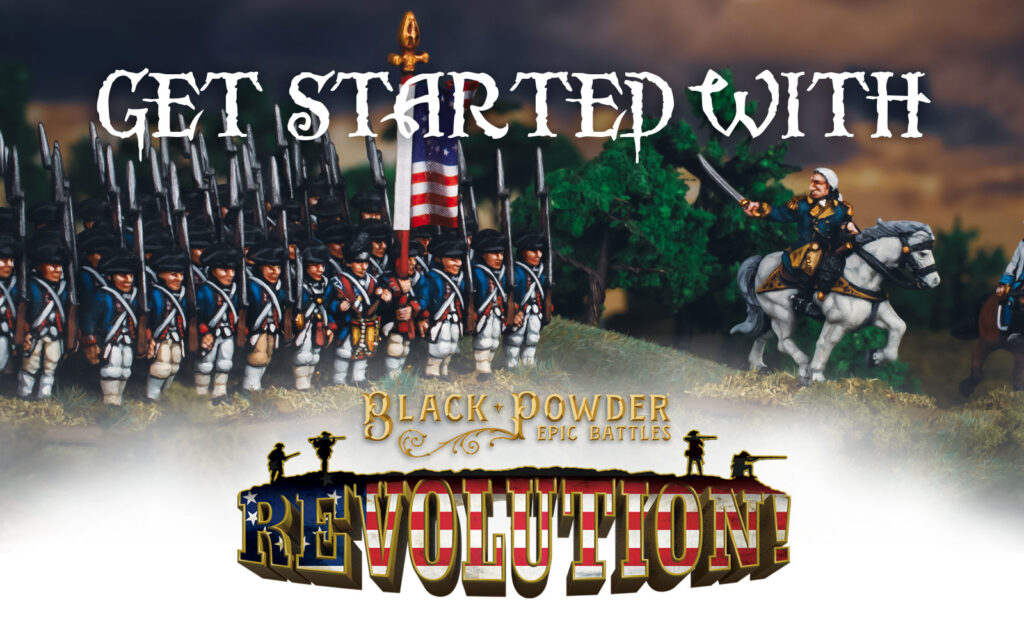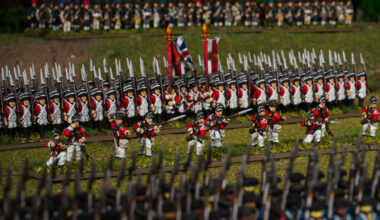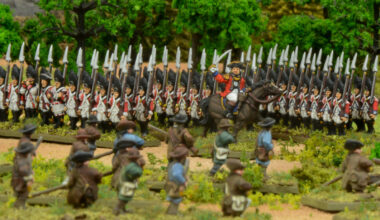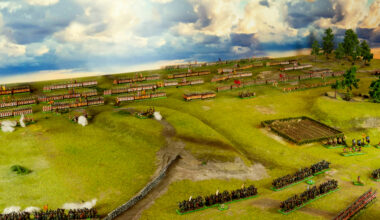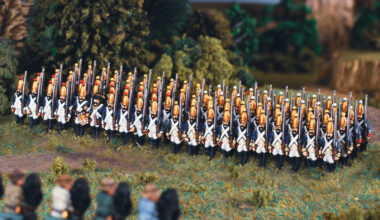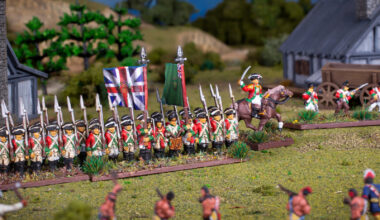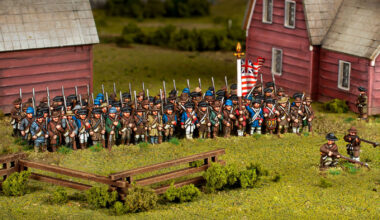MV – Every wargamer has periods of history that have been part of their consciousness seemingly forever, and Warlord Games CEO and Founder John Stallard is no different. Our upcoming Black Powder Epic Battles: Revolution! release is a period that John’s always had an interest in, and I sat down with him to find out just what it is that makes wargaming the American War of Independence so fun, rewarding, and cool, and why we decided to bring it to the Epic Battles family!
JS – The ‘Horse & Musket’ period, covered by Black Powder, is usually defined as stretching roughly from 1700-1900. Right at the start of that timeframe, we have almost a century that can be further classified as the ‘Tricorn era’ – a time of fancy hats and glorious uniforms! It’s a period where the pike had given way to the musket and socket bayonet, and professional armies were replacing the levies and militia of earlier decades.
We always want to do interesting eras with Epic Battles, and having done the American and English Civil Wars, the Napoleonic Wars, and the Punic Wars, we reckoned it was high time to do some tricorns! We could have done any of them – the Great Northern War, Seven Years’ War, the Wars of Spanish Succession, or half a dozen others – but of course we could only pick one! In the end, we chose the American War of Independence – a period that we’ve touched on a little in 28mm previously, and one that’s been part of my life for a very long time. I remember being taught to sing The British Grenadiers at school (I still occasionally catch myself humming it!), and when Airfix came out with their Washington’s Army and British Grenadiers sets I was absolutely hooked by the time I was 11. It’s a period of superbly drilled troops in fabulous uniforms, packed with fantastic flags and of course the iconic tricorns!
As a period to wargame with Black Powder, the American War of Independence is a really interesting and different beast compared to many later wars. For one, a lot of the battles were really quite small, with only 2-3,000 men per side being usual. This is great in Epic Battles scale, as you can get a real feel for the scale of the combat without needing an enormous table. In addition, there was very little use of cavalry or artillery on the battlefield, letting the infantry take centre stage. When you combine this with the wildly varying levels of troop quality on both sides, the conflict becomes a fantastic challenge for any commander.
The British, in their legendary red coats, have on one end of the spectrum their Guards and Fusiliers, impeccably drilled troops who were eager to get stuck in with the bayonet, and on the other a wide range of Loyalist militias. These often served credibly, but certainly didn’t have the training, discipline, or skill of the regulars. The British were also canny enough to get many Native American groups on-side, and these warriors fought well as skirmishers alongside the excellent British Light Infantry. As the war dragged on, and Britain found itself overstretched by fighting in India, the Caribbean, and Ireland, they would increasingly call upon ‘Hessian’ auxiliaries from the German states, and these too proved to be capable troops.
The Americans, meanwhile, had everything to play for. One really must give them a tip of the hat (or tricorn) for having the courage to rise against the Crown. There’s a bit of a myth of the American irregular sniping from the woods against the foolish British regular obligingly presenting a big red target – this of course is absolute nonsense. George Washington had served in the British Army, and consciously made the decision to build the Continental Army as a mirror to that force, only in blue.
This would not be a quick process, but American forces greatly improved over the course of the war, evolving from an enthusiastic collection of amateurs to a disciplined, professional force, with enormous quantities of arms supplied by France and Spain. This process of growth is one of the most appealing things about an American force – you can have militiamen in all manner of civilian clothing supporting blue-coated regulars, which means the painting experience never gets dull. American forces do have their own unique troops, too – riflemen excelled in the smaller-scale warfare common to the conflict, and make a great ‘foil’ for the British Light Infantry.
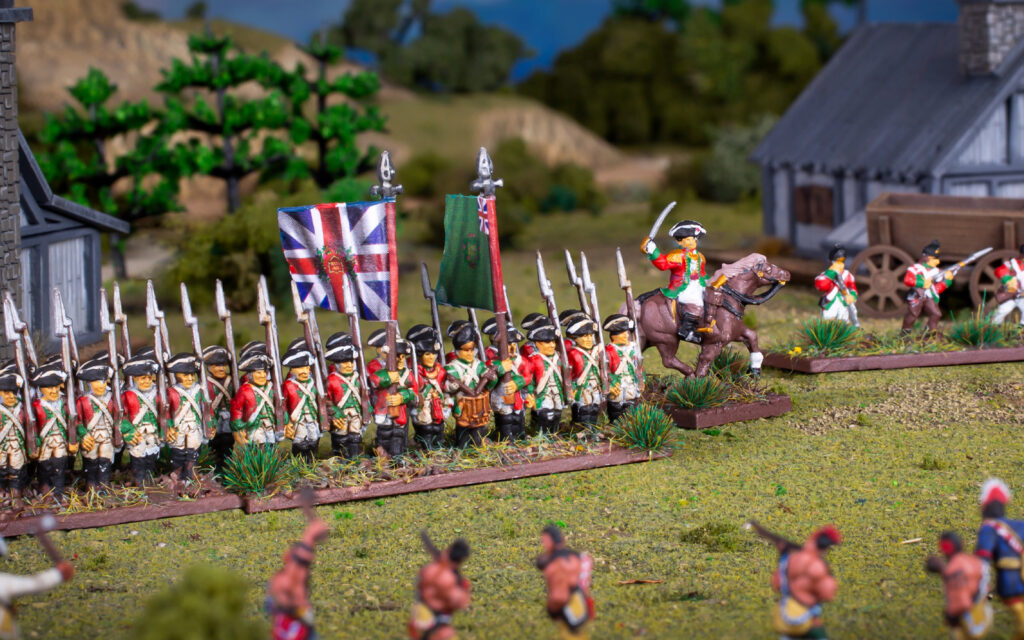
These two sides mean that a game of Revolution! really comes down to the skill of a general in utilising all of the different troops available to them. A Grenadier and Militiaman both fall just the same to a musket ball – it’s all about how you command them, and that’s what makes a good game!
